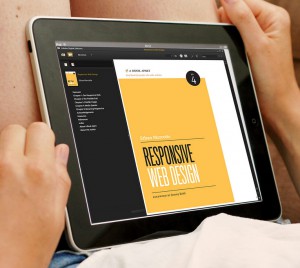 Does your blog have a Responsive Web Design (RWD)? If not, it should. There’s been a growing trend towards the use of Responsive designs, and for good reason. It’s a simple and effective way to improve your site’s traffic and functionality, but this is really just the tip of the iceberg when it comes to the benefits offered by RWD. To learn more about Responsive designs and why you should use it, keep reading.
Does your blog have a Responsive Web Design (RWD)? If not, it should. There’s been a growing trend towards the use of Responsive designs, and for good reason. It’s a simple and effective way to improve your site’s traffic and functionality, but this is really just the tip of the iceberg when it comes to the benefits offered by RWD. To learn more about Responsive designs and why you should use it, keep reading.
What is Responsive Web Design?
Basically, it means designing a website or blog to function the same across all devices — smartphones, tablets, desktops with huge monitors, and laptops of any size. The site can determine which type of device the user is using to access your site, and then display the content appropriately. I’m sure you’ve used your smartphone to pull up a website that is not using RWD and it’s almost impossible to navigate!
1) Increased Traffic
Using a Responsive Web Design for your blog will almost certainly yield more traffic. According to a recent study conducted by IBM, more people access the Internet on their mobile devices than desktop computers. Responsive websites are designed to function the same across all devices, mobile or desktop. This means you can drastically boost your blog’s traffic simply by implementing a Responsive design.
2) Google’s Recommendation
When Google recommends something, it’s usually a good idea to heed its advice. Such is the case involving Responsive Web Designs. Google has stated that it supports three different configurations for creating smartphone-optimized websites: separate mobile domain, dynamic serve content based on user agent, or use a Responsive Web Design. Of the three supported configurations, the only one it recommends is RWD.
“Responsive design: serves the same HTML for one URL and uses CSS media queries to determine how the content is rendered on the client side. This removes the possible glitches of user-agent detection and frees users from redirects. This is Google’s recommended configuration.“
3) Easier to Update
A third reason to use a Responsive Web Design with your blog is the ease of updates and maintenance. Assuming you use a separate mobile domain for mobile traffic, you would have twice the work to do when updating and maintaining your blog. Opting for a Responsive Web Design, however, eliminates this issue by consolidating updates and maintenance into a single domain. This may not be huge benefit for small blogs and websites, but larger ones are sure to appreciate the ease of maintenance offered by RWD.
4) Better Search Rankings
Will using a Responsive Web Design miraculously make your blog jump to the top of the SERPs? Probably not, but it’s a step in the right direction. Google has said time and time again that mobile compatibility (or lack thereof) is a key signal it uses to determine a website’s search ranking. This means websites and blogs using a Responsive Web Design will are more likely to rank higher than websites that are not mobile-friendly.
5) Easy to Scale
A fifth and final reason to use a Responsive Web Design on your blog is because it’s easy to scale. As smartphones and tablets become more advanced, RWD will naturally adapt to meet the users’ needs. Responsive Web Design uses a combination of CSS3 media queries and proportion-based grids (as opposed to fixed units like pixels); thus, creating a universal design that loads and functions the same across all devices.
Does your blog have a Responsive Web Design? Let us know in the comments section below!
Image attribution: https://www.flickr.com/photos/chasingdaisy/


My blog has a responsive design. I think failing to have one is a detrimental mistake. My goal is to make my blog as appealing and enjoyable as possible for my readers; after all, without them, my blog won’t be successful.
When I first started out, my blog didn’t have a responsive design. BIG MISTAKE. I’ve learned that people are in a hurry and will leave your blog if it isn’t functional and fast.
My blog is responsive, but these are excellent tips. I hate pulling up a site that doesn’t work on my mobile device. It’s so frustrating and i’m quick to leave.